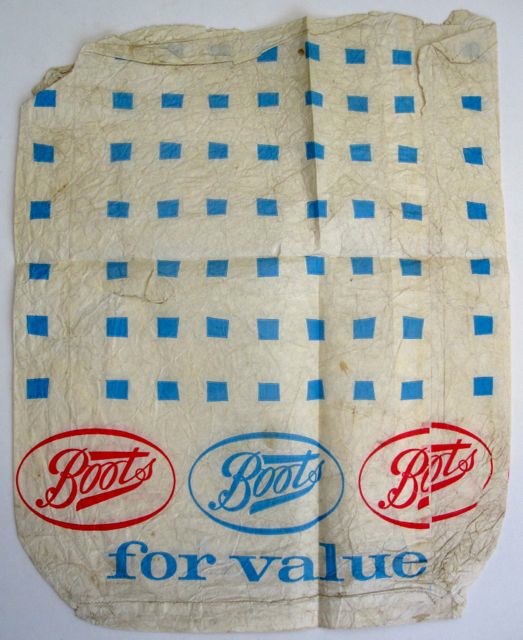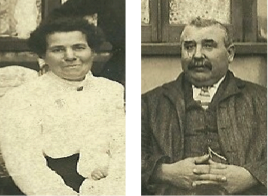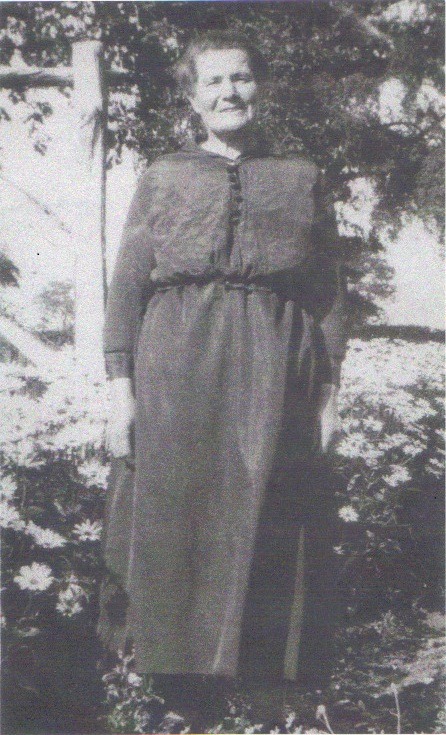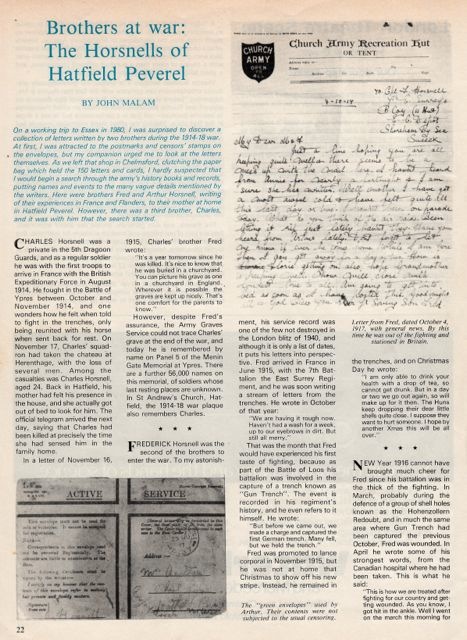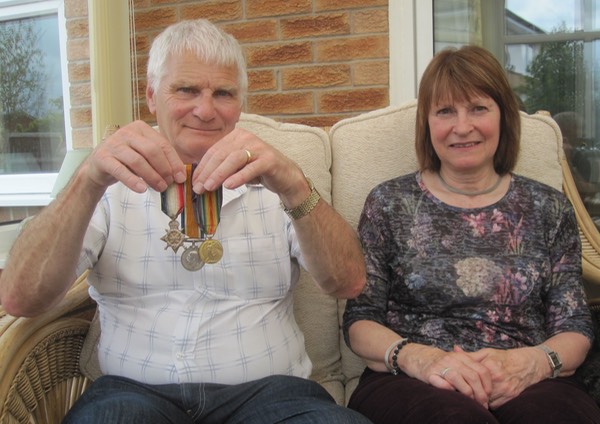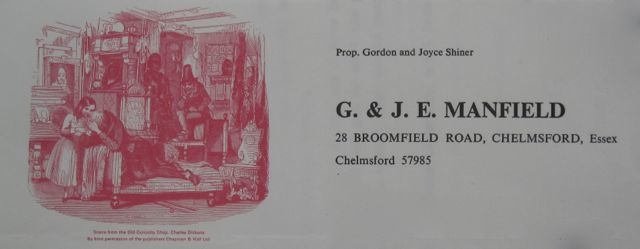
In August 1980 I’d just graduated from university with a degree in archaeology, and was working on an excavation at Pleshey Castle, near Chelmsford, Essex.
On a day off from the dig I went with a friend into Chelmsford. I’ve always been attracted by the idea of "finding things” (it's the job-description of an archaeologist), and when we came across Chelmsford’s very own "Old Curiosity Shop” (that really was its name), at 28 Broomfield Road, the lure of what might lie inside was too much to pass by.
A paper bag
It seemed no different to countless other second-hand goods shops, piled high and deep with house clearance clutter. Furniture that had seen better days, plates in need of a good wash, ornaments dulled by years of trapped dust, piles of books that no-one would ever read again.
The chances of finding anything of interest seemed remote until, at the back of the shop, we spotted a tall glass-fronted cabinet crammed with objects too small – or considered too valuable – to put out with the rest of the goods.
I reached in and took out a paper bag. It was from Boots Chemists, and I could tell from its bulging shape there was something inside. I pulled out an envelope, and another, and another. Each had the same pencilled name and address on it – “Mrs A Doe, School Lane, Hatfield Peverel, Essex”.
The envelopes didn’t have postage stamps on them. Instead, they had cancellation marks – circular Field Post Office (FPO) marks and triangular censors’ marks. The FPO dates confirmed what I suspected – these were First World War army letters, from troops serving on the Western Front.
Price tag
While I was looking at the envelopes, my companion had started reading the letters, and it didn’t take either of us long to realise that these were the real finds. But, could I afford them?
I had a rough idea what a collector would pay for a First World War letter in its original envelope with FPO and censor marks, and with at least 100 in the bag I feared they would be well out of my cash-strapped student price range.
I asked the question.
“One-fifty,” came the reply from the shop owner. Damn it! He obviously knew that individual letters like these fetched upwards of £1 each, and for a collection you’d have to pay a premium. So, £150 was probably about right.
It’s always a good idea to query a price, and I’m glad I did. He confirmed the price, only this time he gave no room for doubt – “One pound fifty”. For the lot. Sold.
Besides the military letters, the bag contained a few wartime letters to Mrs A Doe from family and friends, a pre-war letter from a minister about to “go out as a missionary to Africa”, written to a Mr George Brown of Chelmsford, a prayer card for the Angelus Brotherhood of Hatfield Peverel, an army paymaster memo from 1943 referring to a Mr Frank Grove, deceased, a letter and certificate from the Essex County Constabulary in 1939 to a Mr Stanley Martin of Little Thurrock, appointing him an ARP (Air Raid) Warden … and a couple of tickets for the 1979 Orsett Show.
Mrs Alice Doe, née Horsnell, (1869–1939), mother of Charles, Frederick and Arthur Horsnell, and their step-father, Arthur Doe (1871–1924).
From a family photograph taken c.1916, when both Fred and Arthur were on active service on the Western Front, writing letters home to their “Dear M&F".
Mother of three sons
And so it was, I became the new owner of a large collection of First World War letters written by brothers Fred and Arthur Horsnell to their mother Mrs Alice Doe and step-father Mr Arthur Doe, as they served with the British Army “Somewhere in France”.
That night, back in the dig house, where the team of student archaeologists from the University of Birmingham were billeted, we sat around the table.
In the background a fuzzy black and white television was playing David Bowie’s just-released "Ashes to Ashes" video, but one by one we turned our attention to the words pencilled on the scraps of paper that now lay scattered before us.
Random sentences were read out. Top of the Pops continued to play, but no-one was watching.
“Dear Mother,” wrote Fred in June 1915, “We are now on our way…”
And so was I, on a journey to uncover the story of the brothers at war – Fred, Arthur and their elder brother Charles, killed in action at the Battle of Messines 1914.
A long, long trail
My research began in January 1982 when I wrote letters to newspapers in Essex (Essex Weekly News and Essex Chronicle) and East Sussex (Worthing Gazette and Herald, and Evening Argus).
The Essex papers printed my appeal for information about the Horsnell brothers, the East Sussex papers did not (lack of space, they said).
I also contacted the vicar of St Andrew’s Church, Hatfield Peverel.
In the post came replies from Mrs Annie Doe (1906–88) a step-sister of the brothers, Mrs Esther Doe (1913–97), widow of a step-brother, and Mrs K. Wright (Arthur’s niece). All three were still living in Hatfield Peverel. Mrs Jean Sorrell (daughter of the brothers’ sister Dorothy, and their niece) wrote from Ford End, near Chelmsford.
In May 1982 I received a phone call from Mr David Bones of Braintree. He was Arthur’s grandson, and he kindly put me in touch with his parents Frank (1917–89) and Joan (1924–2009).
Mrs Joan Bones, née Horsnell, was Arthur Horsnell’s daughter, and the closest surviving relative I was able to contact.
In our phone conversation Mrs Bones mentioned a collection of old letters kept in a tin, which she thought had passed to her brother. I was unable to establish if these were the same letters I had bought in the Chelmsford shop.
Mrs Bones also mentioned First World War silk postcards in her possession, sent by Arthur to his mother: as at 2014, these are still with the family. (For a selection of First World War silk postcards, see the image gallery here.)
As well as the family trail, I was writing to regimental museums and the Ministry of Defence (MoD Archives in Hayes, Middlesex), pursuading archive officers to open up their files. This they did, and with the information they passed to me I was able to make a broad reconstruction of the three brothers’ military careers, 1914–1919.
By 1984 I felt I’d exhausted all obvious lines of research, and wrote a short article for Essex Countryside magazine (April 1984 issue).
A new chapter in the story
I always intended to do more with the letters than a short article in a county magazine, and with the coming of the internet all manner of possibilities and new opportunities arose.
It took 27 years before anyone responded to the Essex Countryside magazine article. In 2011, I received an email from a Horsnell family member asking if I was the author of “Brothers at war: The Horsnells of Hatfield Peverel”. From that came new lines of enquiry and, for the first time, photographs of Charles, Fred and Arthur – the pictures used on this site.
This website was published in April 2014, the year of the centenary of the start of the First World War. I wondered if it might lead to new contacts with more information about the brothers. It did.
In August 2014 I was contacted by Frederick Horsnell's grandson (in the UK) and granddaughter (in South Africa), and two of his great-grandchildren. Then, in October 2014, I was contacted by Arthur Horsnell’s grandson.
Through these new contacts I have at last found answers to questions, including “What happened to Fred’s medals?” and “Where is Charles’s memorial plaque – the so-called ‘Dead Man’s Penny'?"
Meeting the family
On 10 May 2015, I had the great privilege to meet Arthur Horsnell’s grandson, Brian, and granddaughter, Diane. They showed me Arthur’s First World War medals and Charles’s memorial plaque, and I showed them their grandfather’s letters, together again after so many years.
And so, the story continues . . .
Acknowledgements
I am deeply grateful to all who have helped me over many years, without whom this story could not have been told. But, the final thanks must go to Charles, Fred and Arthur, who not only did their duty when their country called on them, but who left us with a lasting legacy, speaking to us today as clearly as they did when they pencilled a few hurried lines from the turmoil of the Western Front. This is their story, these are their words.
John Malam | April 2014
Winsford, Cheshire
Footnote
The military letters were not the only finds to come from the glass cabinet at the "Old Curiosity Shop”. I also bought two curios which purported to come from the coffin of Earl Rognvald of Orkney. Having been to Orkney in 1977, I was aware of Earl Rognvald’s importance as architect of St Magnus Cathedral, Kirkwall, and was able to purchase the “relics” and return them to the Orkney Islands Council. For that story, see here: Rognvald the Wrong, published in British Archaeology, December 2000.
